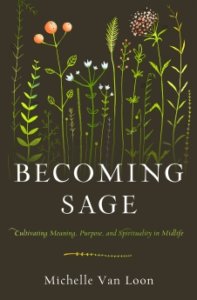Older adults are leaving or downsizing church involvement at rates comparable to that of younger adults, says Michelle Van Loon. Churches that typically focus most of their energy on early-stage faith training need to give similar attention to the spiritual needs of those in the second half of life.
A high percentage of our churches tend to approach the task of discipleship with a strong focus on early-stage faith training. We pour lots of energy and money into ministry focused on children and families. And many congregations are deeply committed to equipping new believers with the basics of faith. This is beautiful and important work.
The lack of emphasis on ongoing disciple-making among those further along in their journey with Jesus leads many to assume that simply repeating the same patterns they learned as new believers will sustain them throughout their days. While the practice of classic spiritual disciplines is foundational to spiritual growth, it is equally true that the questions, transitions, and shifts that take place at midlife and beyond call for different kinds of conversations, prayer, reflection, and response to God.
A quiet exodus
The most recent U.S. census tells us that about a third of the population in this country is in the second half of their lives and is the fastest growing demographic in the country. Other studies report that older adults are leaving or downshifting church involvement at a level comparable with that of millennials and older members of Gen Z. There are many factors contributing to this quiet exodus among those in the second half of their lives, but one that I’ve heard repeatedly from many leavers (as well as those who are staying but struggling) is that they feel they’ve “aged-out” of their congregations, even though they haven’t outgrown their faith.
Challenges and questions in midlife
It may be easy to default to the idea that adulthood is like a long, unbroken stretch of highway. We get on the entrance ramp and keep driving until we reach the end of the road. However, adulthood has distinctive movements, each with different developmental tasks. In young adulthood, we are building our lives, making decisions about relationships, careers, and lifestyle. At midlife, we face shifts as seismic as they were during puberty. Our bodies change, our nests empty, and our first-half-of-life ambitions tend to focus on making meaning of what has come before. And old age carries with it an entirely new set of challenges both as loss and the desire to leave a legacy shape our final days.
Some of the key challenges facing those in the second half of life are:
- Changing family relationships. Midlife is characterized by transition, and those transitions show themselves vividly against the backdrop of family life. Some changes, such as the birth of a grandchild, are joyous and welcome. Others, such as the death of a parent, are journeys into the valley of the shadow.
- Changing networks of friends. As we move into the second half of our lives, we consider the friends we have had, the friends we lack, and the friendships we hope to form moving forward.
- The changes and challenges of aging bodies. Our culture tells us our value is tied to youth, attractiveness, sexuality, and health. Growth in bodily wisdom in midlife includes a grateful acceptance of our aging bodies’ changing beauty and limitations and a willingness to steward our bodies as we are able to nurture both self and others to the glory of God.
- Spiritual formation in the area of finances. If we are growing toward maturity, we will also grow in our desire to create a meaningful legacy that involves more than a simple financial formula.
- Nurturing emotional and spiritual health. Research on life satisfaction reveals that people across the globe are most happy in their younger years and in old age but most unhappy as they roll through their middle years, prone to depression and midlife malaise.
Becoming sage
As the hubris and ambition of early adulthood begin to fade, we can begin to recognize that we are becoming the human beings God created us to be. There is no online spiritual maturity test or tidy prepackaged discipleship program that can shortcut the journey to becoming sage. Maturity is forged from the beautiful and terrible and mundane stuff of our lives as we seek to crawl, stand, walk, and run with Jesus.
If we in the church are called to be a countercultural community, expanding our discipleship focus to include and embrace every life stage just might be one of the most countercultural things we can do in our youth obsessed society. God doesn’t offer us a fountain of youth. Instead, God is calling us toward maturity while promising fruitfulness in very season of our lives.
Adapted from Becoming Sage: Cultivating Meaning, Purpose, and Spirituality in Midlife by Michelle Van Loon (©2020). Published by Moody Publishers. Used by permission.
Related Resources
- Leading Idea Talks Episode 57: “Is the Church Ignoring the Spiritual Needs of Adults in Midlife?” featuring Michelle Van Loon
- Developing an Intentional Discipleship System by Junius B. Dotson
- 50 Ways to Strengthen Adult Education, a free resource from the Lewis Center
- Becoming Sage: Cultivating Meaning, Purpose, and Spirituality in Midlife (Moody Publishers, 2020) by Michelle Van Loon







